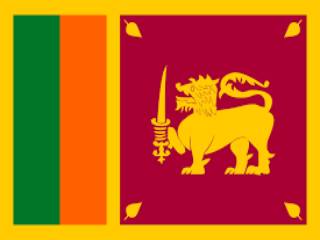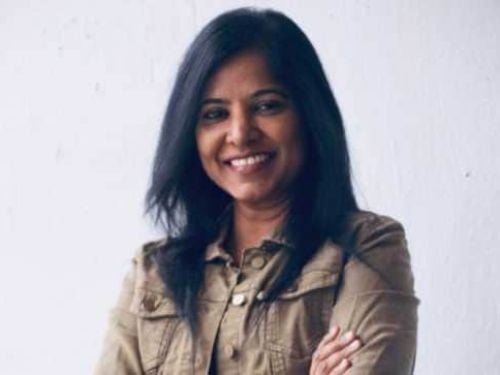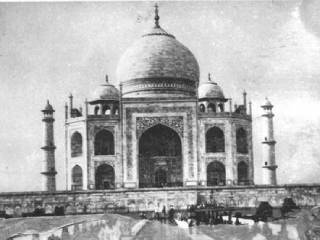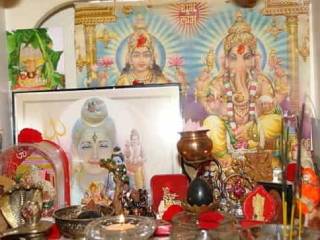The tide of Hindutva was inaugurated by Raj Narain Bose (maternal grand father of Aurobindo Ghosh) and Nav Gopal Mitra in undivided Bengal in the 19th century. Two strong currents of thoughts, ideals, and aspirations met together and strove for supremacy in Bengal in those days. One was a current of Hindu Nationalism – of the revived life, culture and ideals of the nation that had lain dormant for centuries and had been discarded as ‘lower and primitive’ by the first batch of English-educated Hindus, especially in Bengal. The other was the current of Indo-Anglicism – the onrushing life, culture and ideals of the foreign rulers of the land, which, expressing themselves through British law and administration on the one side, and the new schools and universities on the other, threatened to swamp and drown the original culture and character of the people going back to the dawn of history.
Bankim Chandra Chatterjee offered the next milestone for those marching on the road of Hindutva by the publication of his novel Anand Mutt in 1882. Swami Vivekananda awakened the Indians and the Western world to the glorious wisdom of Hindutva. Swami Dayananda Saraswathi, founder of Arya Samaj, made us aware of our glorious Vedic heritage. Aurobindo Ghosh was another sage whose thinking enriched the philosophy of Hindutva. In 1909 he wrote: ‘An Indian Nationalism, largely Hindu in its spirit and traditions, because the Hindu made the land and the people and persists, by the greatness of his past, his civilization and his culture, and his invincible virility. The ‘Nation Idea’ India never had. By this I mean the political idea of the Nation. It is a modern growth. But we had in India the cultural and spiritual idea of the Nation’. This is the quintessence of Hindutva. Bal Gangadar Tilak, Vir Savarkar, Dr Hegdewar, Guruji Golwalkar have all built up this great edifice of Hindutva. Hindutva is not a word but a history. Hinduism is only a derivative, a fraction or a part of Hindutva or Hinduness!! Dr Subramanian Swamy’s new book clearly proves that our struggle for establishing a Hindu Nation based on Hindutva is a continuing movement, and not a condition; a sacred and eternal journey and not a harbour.
Let me summarize the fundamentals laid down by Dr Swamy for creating a new Hindu Renaissance. The First Fundamental is the national acceptance of the concept of India as Hindustan. Hindustan does not mean that the land belongs to the Hindus. Even on that score a citizen has a claim to Hindustan by birth. In fact, whoever has lived in India, has had forefathers who were Hindus. Paradoxically, Bharat has a religious connotation, while Hindustan does not. One has to read the Vishnupurana to recognize that. Instead of calling ‘India that is Bharat’, our constitution makers should have said ‘India that is Hindustan’. Hindustan has to be defined as a nation of Hindus and those who accept that their ancestors are Hindus. The concept also includes refugee minorities who accept the core values of the Hindu culture and are therefore recognized as a part of the Hindu nation. In other words, Dr Swamy rejects the notion of India as a multinational state as advocated by the communists and the pseudo-secularists in the Congress and other Islam-Embracing, Christianity-Coveting and Anti-Hindu political parties. Instead India, that is Hindustan, has an organic cultural core which is Hindu in character.
The Second Fundamental is the paramount national need for an Enlightened Secularism resting on a Common Cultural Heritage. Since India is a land of different religious faiths, we need a concept of how people bond together and mutually accommodate their religious aspirations without conflict. He rejects the Marxist view of secularism as Aggressive Left Secularism. In this context he cites the example of Marxist M.Ps stupidly objecting to our Prime Minister lighting lamps at public functions as non-secular! Enlightened Secularism means: a) State neutrality to all religions b) Equality of all religions before Law c) Uniform laws for all religious groups to adhere to d) The majority has a special responsibility to foster harmony with minorities, but necessarily founded on the concept of mutual obligation. Minorities must thus concede majority concerns / rights as well. Secularism cannot be a one-way obligation. e) Acceptance of Sanskritization process for cultural integrity. Dr.Swamy makes it clear that the State and Religion are separate. The State should enact laws which, without interfering with the essential fabric of culture and religion, integrate society and promote a national outlook. Dr Swamy rightly observes that Nehru subscribed to the Marxist concept of secularism and failed to define what historical roots ought to be the part of the modern India and what was to be rejected. In the name of scientific temper, he destroyed the soul of Mother India by rejecting most of our glorious past as ‘obscurantism’. It is on this vicious principle that he rejected the concept of a Uniform Civil Code for India.
The Third Fundamental relates to the strategy for economic reform in a globalized world. Nehru rejected the economic programmes advocated by Gandhi or Sardar Patel before independence and adopted the Soviet model. It suited the interests of two powerful vested groups within our country: One, the feudal compradors whose progeny during British rule received English education and then entered the bureaucracy through Civil Service examinations. The other group was Left-Inspired Indian intellectuals educated in the 30s and 40s in Oxford and Cambridge (the ‘Kim Philby’ group). The latter group gave Nehru the necessary intellectual ballast, and used their friendship with Nehru, to secure posts in key points in Government, press, academic and diplomatic service in India after 1947. The economic perspective that Dr Swamy advocates for National Renaissance is radically different from the other competing ideologies like Capitalism, Socialism and Communism. He whole heartedly advocates the socio-economic philosophy of Integral Humanism which was propounded by Pandit Deendayal Upadhyaya who had clearly foreseen the dangers of globalization and mechanical imitation of the West even in the mid 1960s, long before even the process had started. Another great intellectual Dattopant Thengadi wrote a monograph on the conflict resolution called for between market economy and Hindu human values. It is prudent to stay with the globalization process and search for ways and means to carve our own corner and niche in it. Dr Swamy advocates a new economic programme to make Hindustan’s participation in the globalization process, socially tolerable and morally adequate. Dr Swamy makes out a strong case for a national system of education designed to empower our teeming millions with IT savvy self-employment skills, and also to develop a secular patriotic ethos that courageously resists fundamentalism and terrorism. Such an orientation will enable the country to remain focussed on development issues instead of the commercial or political fortunes in perpetuity of one family called the Nehru Family!
The Fourth Fundamental has been outlined by Dr.Swamy in these words: ‘If a market-oriented economy that fosters self-reliance in individuals and protects the weak through a safety net is ideal for renaissance, an effective National Security Doctrine in which the goal is to defend the assets of the nation and to achieve for India a polar position in the international power structure, is best suited for the country and conducive for our national renaissance’. He clearly shows that the national security of a nation is a composite of the GDP, defence capability, effective and innovative population, technological capacity, national health and environmental stability. India has been lacking in collective political will during the last six decades of our independence to realize India’s potential to its fullest capacity mainly because of our identity crisis. Our National Security Advisory Board is like any Rotary Club or Lion’s Club, its formal structure lacking an ideological support framework and concept of national identity. By following the current TERRORISM-EMBRACING NATIONAL INSECURITY DOCTRINE of the UPA government in New Delhi, India is bound to collapse and balkanize like the USSR, Yugoslavia, Lebanon or fragments like Columbia into separate countries or areas with rampant terrorism, narcotic rackets and AIDS, stark poverty and unemployment.
The Fifth Fundamental for Dr Swamy is declaring Sanskrit as the link language and Devanagiri as common script. Nothing divides our nation today more than linguistic and caste differences. After our independence, these differences have been promoted as a crucial plank of national policy by the Congress Party under Nehru, Indira Gandhi, Rajiv Gandhi, Narasimha Rao and now Sonia Gandhi. Dr Swamy makes out a strong case for making Sanskrit the official link language of India by adducing valid reasons. In this context he refers to the recent discovery by NASA in USA about the multiple uses of Sanskrit language for computer processing in the realm of Artificial Intelligence (AI). To the chagrin and dismay of all the anti-national pseudo-secularists in New Delhi, NASA has discovered that Sanskrit, the world’s oldest spiritual language, is the only unambiguous spoken language on the planet.
To conclude, Hindustan must wake up to her destiny which is to revive her spiritual culture and share it for the benefit of all mankind. This requires that the intellectual elite of the county cease denigrating the soul of India in hasty and superficial attempts to be secularly stupid and modern and inhumanly humanitarian. It requires a new Hinduism that corrects the social evils of the older Hinduism while maintaining the greater spiritual basis of the eternal tradition for a new awakening to Sanatana Dharma. Such an awakening is essential not only for India but for the entire world. This in short seems to be the quintessence of Dr.Subramanian Swamy’s clairvoyant message to all our countrymen in his new book.
(Concluded)
(The writer is a retired IAS officer)
http://newstodaynet.com/2006sud/06nov/0311ss1.htm

 Mizoram: EC accepts Christians’ demand to defer counting on Sunday, but what if Hindus had made a similar demand?
Mizoram: EC accepts Christians’ demand to defer counting on Sunday, but what if Hindus had made a similar demand? Sign Petition : Immediately repeal the draconian and unconstitutional ‘The Waqf Act, 1995’
Sign Petition : Immediately repeal the draconian and unconstitutional ‘The Waqf Act, 1995’ Shriram : Sri Lanka’s saviour
Shriram : Sri Lanka’s saviour Why it is so cool to malign Hindu gods and goddesses, but it may not be that easy now
Why it is so cool to malign Hindu gods and goddesses, but it may not be that easy now Shocking Truth of Taj Mahal exposed by Late Pujya P. N. Oak
Shocking Truth of Taj Mahal exposed by Late Pujya P. N. Oak How are Hindus treated in states where they are in a minority?
How are Hindus treated in states where they are in a minority?